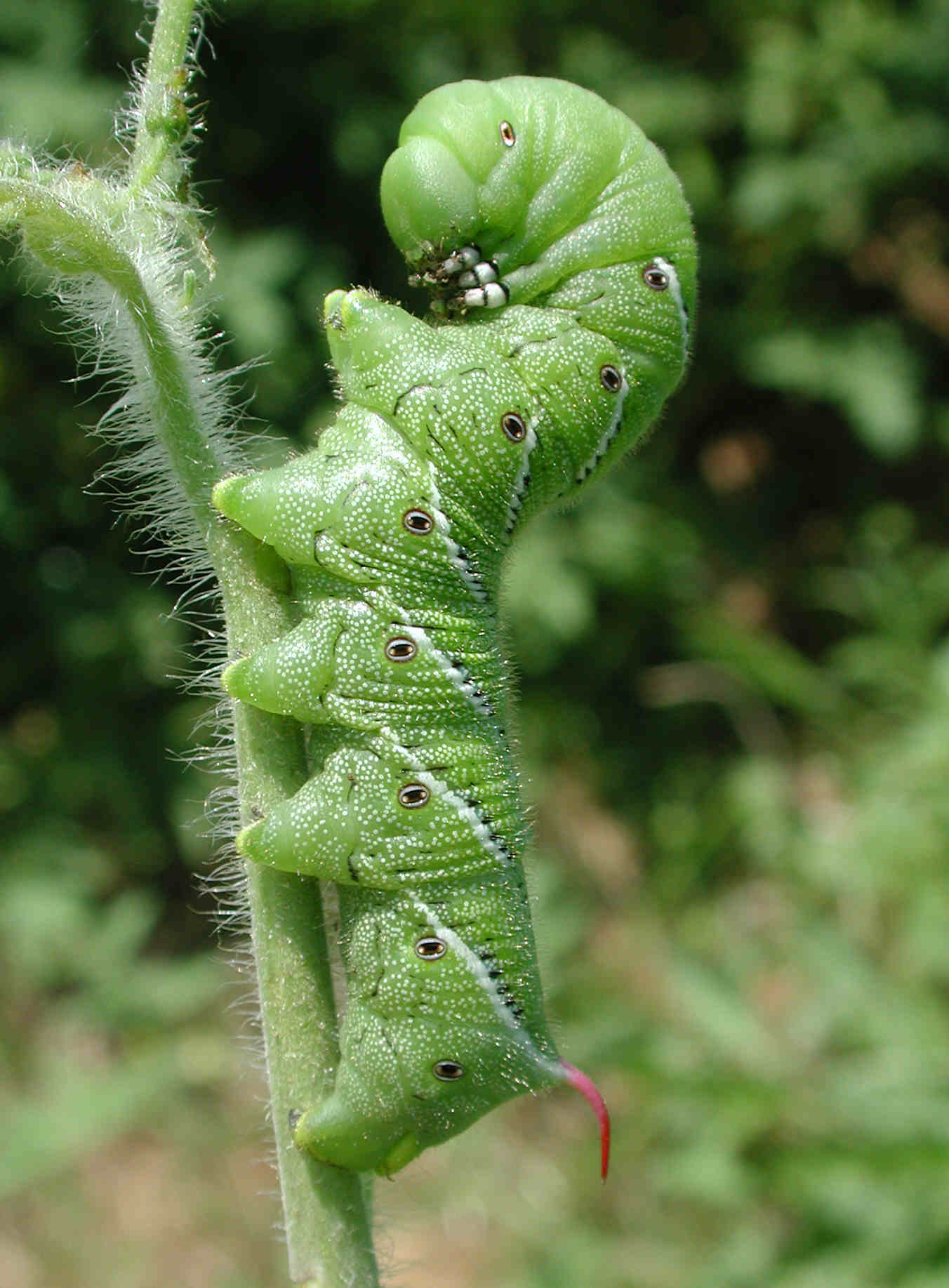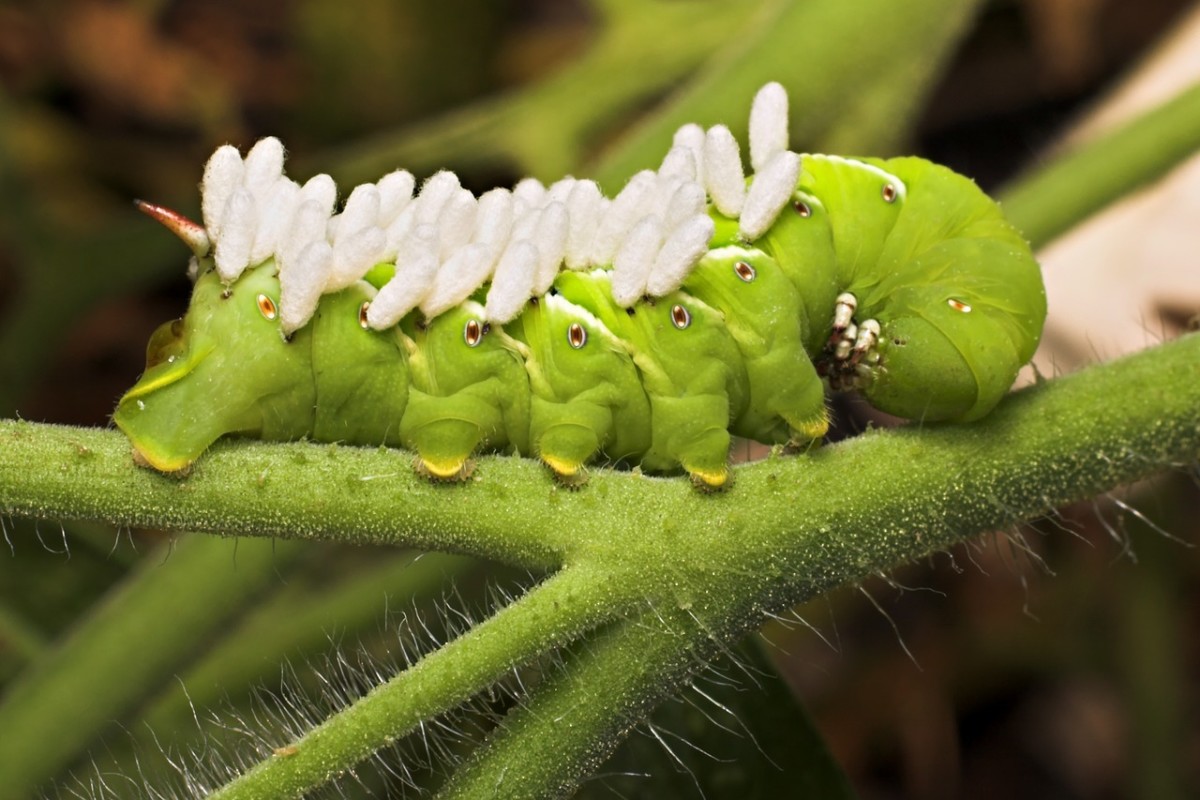

Hornworm caterpillars blend in with the foliage, so they often go undetected until damage is severe. To limit hornworm damage, scout often for signs of feeding, says Warmund. Pupae overwinter about 5-6 inches below the soil surface. Full-grown caterpillars of the second generation, which develop in mid-to-late summer, drop off plants to pupate. In contrast, late-instar tobacco hornworm caterpillars have seven diagonal stripes on their body and their horn is usually red. When fully grown, caterpillars are usually green, but dark brown types can also develop.įull-grown tomato hornworm caterpillars have V-shaped markings on their sides and a black posterior horn. The first small instar is whitish-yellow with five pairs of prolegs used to grip onto plant stems and leaves. After mating, females lay their small eggs -which often go unseen - on leaves of tomato and other host plants, says Warmund.Īfter hatching, tomato hornworms undergo five larval or instar stages in three to four weeks. Moths of both species are mottled gray-brown with wingspans of 4-5 inches. The adult moths emerge in mid-to-late spring. Usually, two generations of hornworms develop each summer. They also chomp on eggplant, pepper, potato and some weeds, such as horsenettle, jimsonweed and nightshade. Hornworms chew holes in green tomato fruit as well, especially during dry weather. Measuring up to 4 inches, these munching marvels devour tomato plant leaves and strip them bare if unchecked. These insects are big, green, and hungry, says University of Missouri Extension horticulturist Michele Warmund.

Several types of caterpillars damage tomato plants in Missouri, but the tomato hornworm and the tobacco hornworm usually get the most attention because of the prominent horn on the last segment of their bodies.


 0 kommentar(er)
0 kommentar(er)
